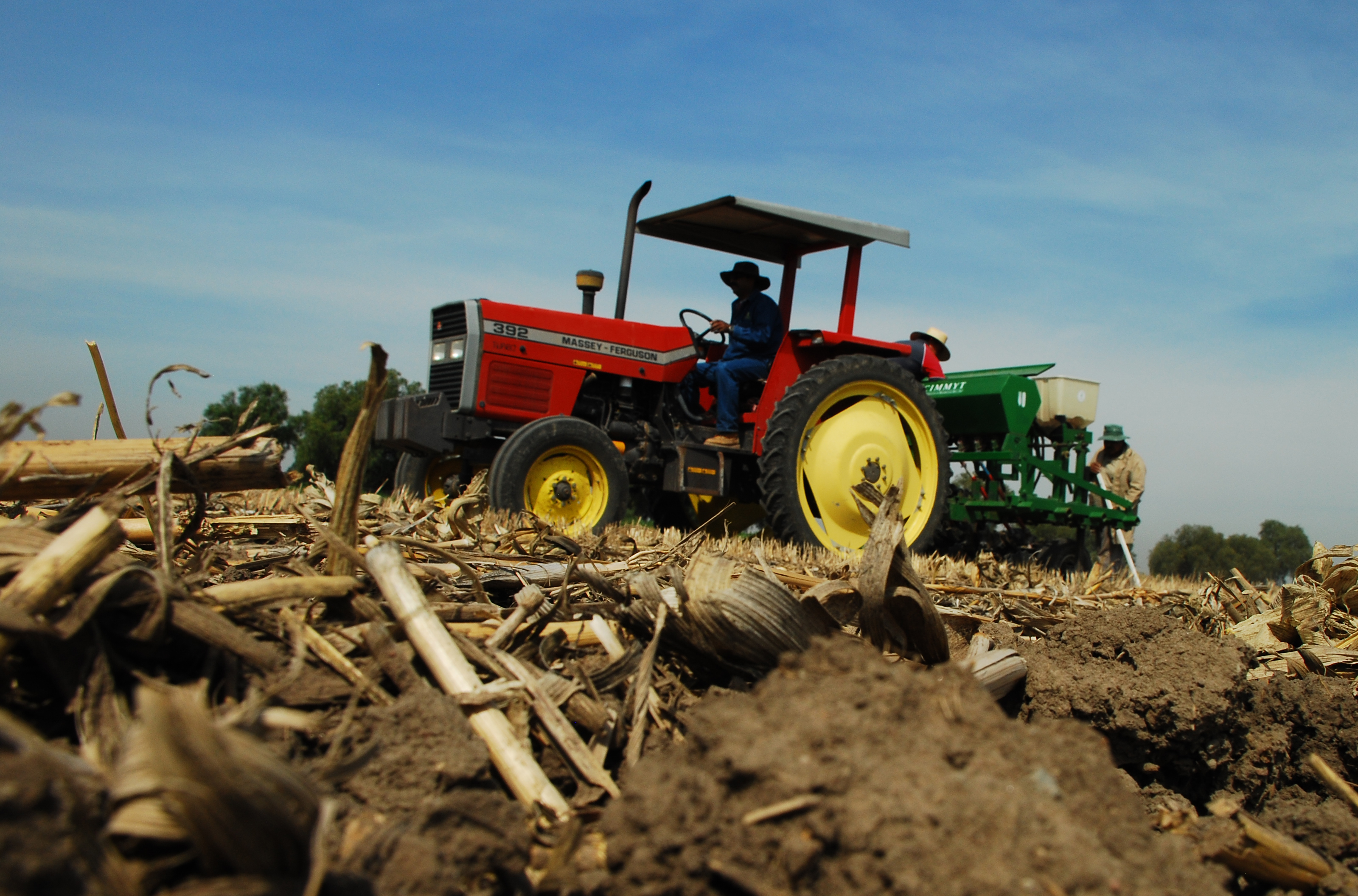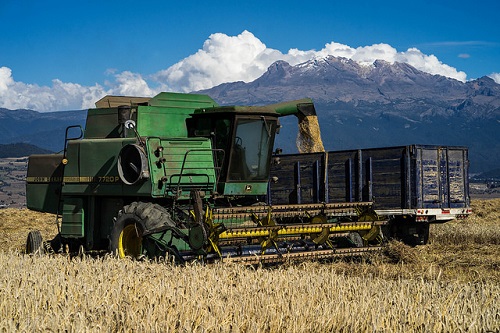 After two years of meticulous work, the book Linear Selection Indices in Modern Plant Breeding has been released by Springer International Publishing for use by plant and animal breeders worldwide. The authors of the book, J. Jesus Céron-Rojas and José Crossa, are scientists with the Biometrics and Statistics Unit of the Genetic Resources Program at the International Maize and Wheat Improvement Center (CIMMYT). The authors saw a window of opportunity to better explain how various types of linear selection indices can be constructed, interpreted, optimized and applied in breeding through the research presented in this book.
After two years of meticulous work, the book Linear Selection Indices in Modern Plant Breeding has been released by Springer International Publishing for use by plant and animal breeders worldwide. The authors of the book, J. Jesus Céron-Rojas and José Crossa, are scientists with the Biometrics and Statistics Unit of the Genetic Resources Program at the International Maize and Wheat Improvement Center (CIMMYT). The authors saw a window of opportunity to better explain how various types of linear selection indices can be constructed, interpreted, optimized and applied in breeding through the research presented in this book.
As the first book released on the subject in over thirty years, the publisher describes it as “essential reading for plant quantitative geneticists” and “a valuable resource for animal breeders.” Its high-profile scientific contributions are expected to generate an extensive impact in the international community of theoretical and practical plant and animal breeders.
To examine classification more closely, breeders use indices to categorize traits of interest to make complete representations of desired qualities in plants and animals. Focused on the linear selection index theory and its statistical properties, breeders will be able to use phenotypic and genotypic information to assess the genetic merits of the candidates to selection.
The book is published as open access and available online.
This book is the result of financial support from the Bill & Melinda Gates Foundation, the United States Agency for International Development (USAID), the International Maize and Wheat Improvement Center (CIMMYT), the CGIAR Research Program on Maize (MAIZE)and the CGIAR Research Program on Wheat (WHEAT).
Check out other recent publications by CIMMYT researchers below:
1. Soil organic matter underlies crop nutritional quality and productivity in smallholder agriculture. Wood, S.A., Baudron, F. In: Agriculture, Ecosystems and Environment v. 266, p. 100-108.
2. Wheat−the cereal abandoned by GM: genetic modification of wheat for disease resistance could help stabilize food production. Wulff, B.B.H., Dhugga, K. In: Science v. 361, no. 6401, p. 451-452.
3. Breeding for provitamin A biofortification of maize (Zea mays L.). Maqbool, M. A., Aslam, M., Issa, A.B., Khan, M. S. In: Plant Breeding v. 137, no. 4, p. 451-469.
4. Occurrence of the root-knot nematode species in vegetable crops in Souss region of Morocco. Janati, S., Abdellah Houari, Ahmed Wifaya, Adil Essarioui, Abdelaziz Mimouni, Abderrahim Hormatallah, Mohamed Sbaghi, Dababat, A.A., Mokrini, F. In: Plant Pathology Journal v. 34, no. 4, p. 308-315.
5. High N fertilizer application to irrigated wheat in Northern Mexico for conventionally tilled and permanent raised beds : effects on N balance and short term N dynamics. Grahmann, K., Verhulst, N., Dittert, K., Govaerts, B., Buerkert, A. In: Journal of Plant Nutrition and Soil Science vol. 181, no. 4, p. 606-620.
6. Correction to: bayesian functional regression as an alternative statistical analysis of high-throughput phenotyping data of modern agriculture. Montesinos-López, A., Montesinos-Lopez, O.A., De los Campos, G., Crossa, J., Burgueño, J., Luna-Vazquez, F.J. In: Plant Methods v. 14, art. 57.
7. β-cryptoxanthin–biofortified hen eggs enhance vitamin a status when fed to male Mongolian gerbils. Heying, E.K., Leary Ziemer, K., Tanumihardjo, J.P., Palacios-Rojas, N., Tanumihardjo, S. A. In: The Journal of Nutrition v.148, no. 8, p. 1236-1243.
8. Urgent action to combat climate change and its impacts (SDG 13) : transforming agriculture and food systems. Campbell, B.M., Hansen, J.W., Rioux, J., Stirling, C., Twomlow, S., Wollenberg, E. In: Current Opinion in Environmental Sustainability v. 34, p. 13-20.
9. Factors affecting the adoption of multiple climate-smart agricultural practices in the Indo-Gangetic plains of India. Aryal, J.P., Rahut, D.B., Maharjan, S., Erenstein, O. In: Natural Resources Forum v. 42, no. 3, p. 141-158.


 Innovations
Innovations 